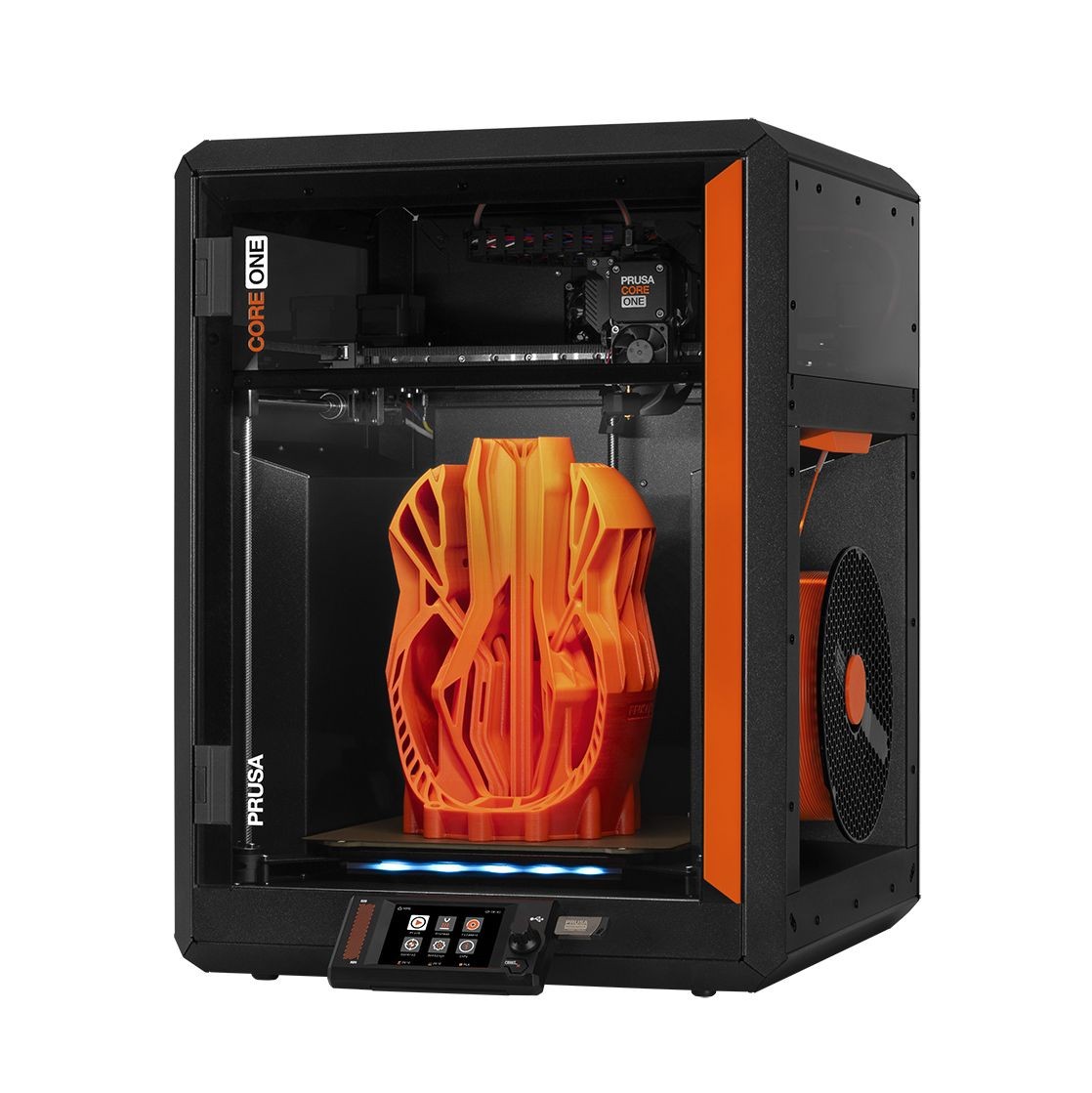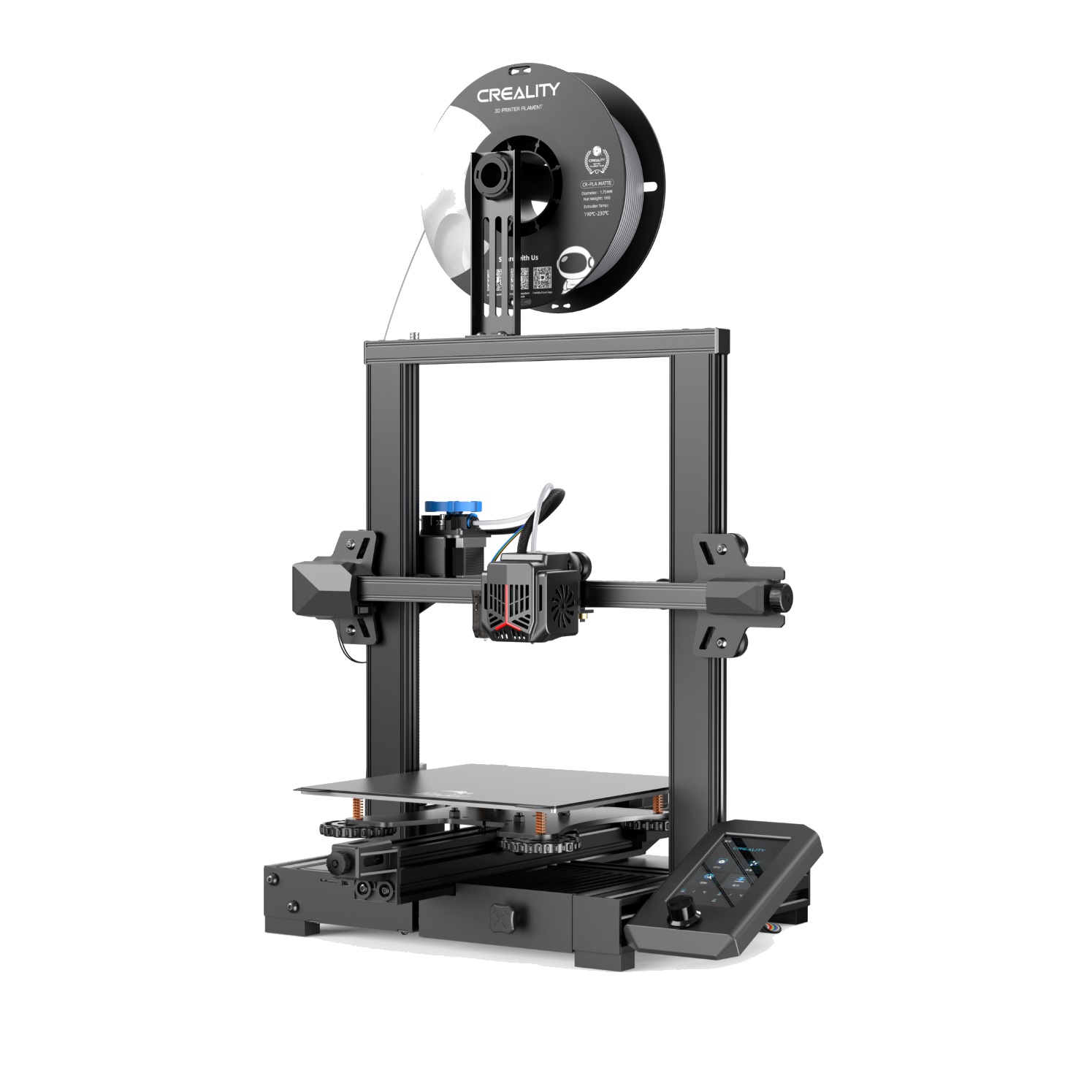Compare Core One vs Ender 3 V2 Neo
Comparison between the best 3D printers
Choose the best 3D printer at the best price. The cheapest 3D printers are here.
Buy a 3D printer here with 3D Fila.
 |
 |
|
| Model | Core One |
Ender 3 V2 Neo[BUY Ender 3 V2 Neo] |
| Printing Material | Filament | Filament |
| Buy Filament for Prusa Core One | Buy Filament forCreality 3D Ender 3 V2 Neo | |
| Estimated price | $1200,00 | $310,00 |
| Manufacturer | Prusa | Creality 3D |
| Release Year | 2025 | 2022 |
| Print Volume [mm] | 250x220x270 | 220x220x250 |
| Printer Size [mm] | 385x340x620 | 438x424x472 |
| Weight [kg] | 14 | 9,8 |
| Power Loss Recovery | YES | YES |
| Enclosed printer | YES | NO |
| Bed Leveling | Automatic | Automatic |
| Filament End Sensor | YES | YES |
| Bed type | Heated | Heated |
| Power supply system | Direct Drive | Bowden |
| Standard nozzle | 0,4 | 0,4 |
| Maximum Nozzle Temperature [°C] | 300 | 260 |
| Maximum Bed Temperature [°C] | 120 | 100 |
| Maximum printing speed [mm/s] | 500 | 80 |
| Filament holder | YES | YES |
| Camera for supervision | NO | NO |
| Recommended filaments | PLA, TPU, TPE, HIPS, ABS, PETG, WOOD, PC, PA, PVA, ASA | PLA, PETG |
| Recommended slicers | Cura, Prusa Slicer, Orca | Cura, Simplify, Slic3r, IdeaMaker |
| Maximum Resolution [mm] | 0,01 | 0,1 |
| Processor | xBuddy 32 bit | 4.2.2 mainboard |
| Display | Touchscreen 3,5'' | Display touchscreen 4,3'' |
| Power Supply | 240 W | |
| Connectivity | SD | SD / USB |
| Operating systems | Windows, Linux e Macbook | Windows, Mac, Linux |
| Date of registration in the system | 2024-11-27 | 2022-12-09 |
| Release date | 2025 | 2022 |
| Extra features | The Prusa Core One is a CoreXY 3D printer featuring a robust steel frame, a 3.5" touchscreen, and a heated chamber for technical filaments. It offers 360° cooling for improved print quality and supports upgrades from the MK4S model. With a compact design, a print volume of 270x250x220 mm, and compatibility with the MMU3 for multi-color printing, it stands out for its ease of maintenance, precision, and speeds up to 260% faster than the MK3S+. | The Ender 3 V2 Neo printer stands out for its automatic bed leveling with the CR Touch system, ensuring high-quality initial layers. It features an all-metal Bowden extruder for increased durability and improved filament handling. Its flexible, PC-coated magnetic build plate makes it easy to remove prints and is durable and easy to clean. It also includes a new user interface with model preview and an updated gantry design. The Ender 3 V2 Neo maintains the same build volume and temperatures as the previous version, supporting popular filaments such as PLA and ABS. It features a quiet 32-bit mainboard and additional features such as a filament sensor, print recovery, simple 3-step assembly, an integrated toolbox, and belt tensioners. |
| Support for multiple colors and materials (AMS and CFS) | YES | NO |
Notes * |
||
| Cost-benefit | 7 / 10 | 7 / 10 |
| Hardware | 6 / 10 | 2.8 / 10 |
| Tela | . | . |
| Print volume | 3 / 10 | 3 / 10 |
| Performance | 4 / 10 | 0 / 10 |
| [BUY Ender 3 V2 Neo] |
Conclusion |
| In comparing the Prusa Core One and the Creality Ender 3 V2 Neo, several key factors emerge that can aid potential buyers in making an informed decision. The **Prusa Core One**, while significantly more expensive, offers superior features including a larger print volume, higher maximum print speed, and extensive compatibility with various filament types. Its enclosed design and advanced cooling system make it suitable for a wider range of materials, particularly technical filaments that require a controlled environment. The printer also supports multi-color printing options and is engineered for ease of maintenance, potentially making it more desirable for users with more complex printing needs. On the other hand, the **Ender 3 V2 Neo** presents itself as an accessible entry-level option. Priced much lower, it still includes necessary features like automatic bed leveling, a robust build plate, and a user-friendly interface. Although it has a smaller print volume and a lower maximum print speed, it is a dependable choice for beginners or hobbyists who primarily work with standard filament types like PLA and ABS. In summary, the choice between these two models largely depends on the user's budget and specific printing requirements. For those seeking high performance, versatility, and advanced features, the Prusa Core One is likely the better investment. Conversely, for budget-conscious users or those new to 3D printing, the Ender 3 V2 Neo offers solid functionality and reliable prints at a significantly lower price point. Ultimately, both printers have their merits, making them suitable for different segments of the 3D printing market. |

